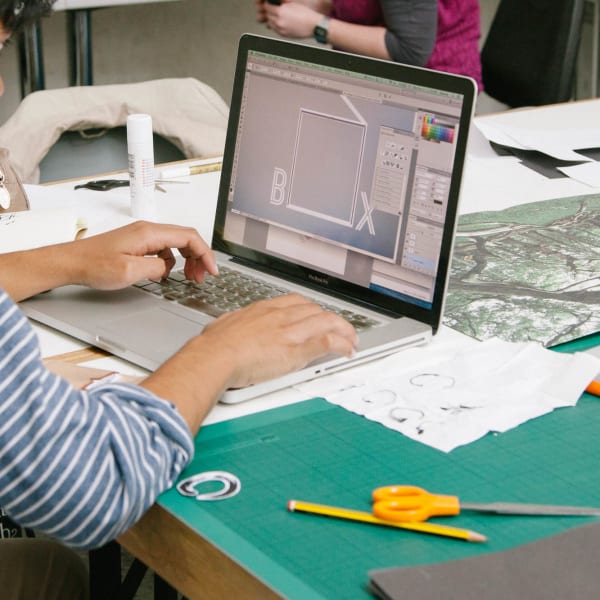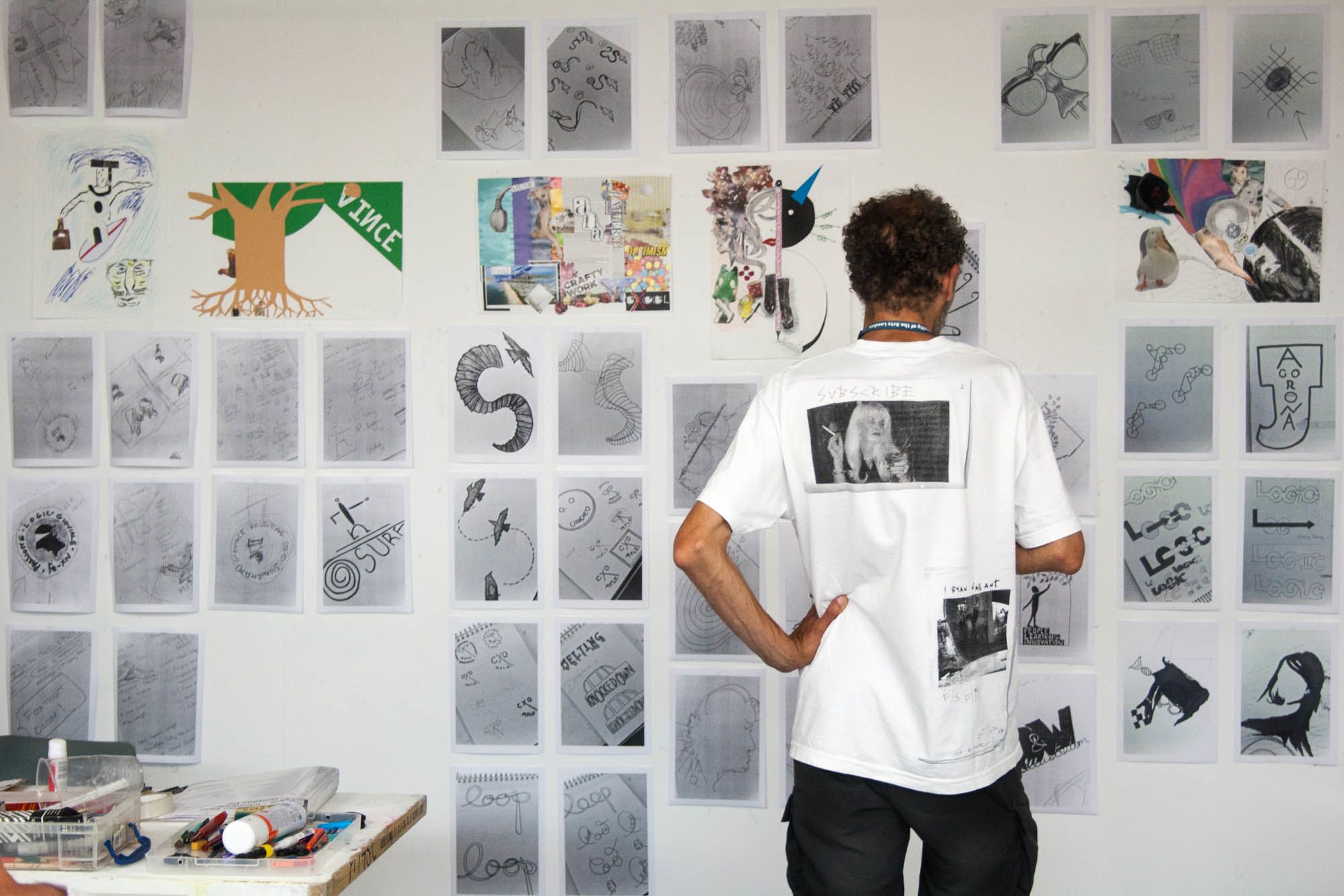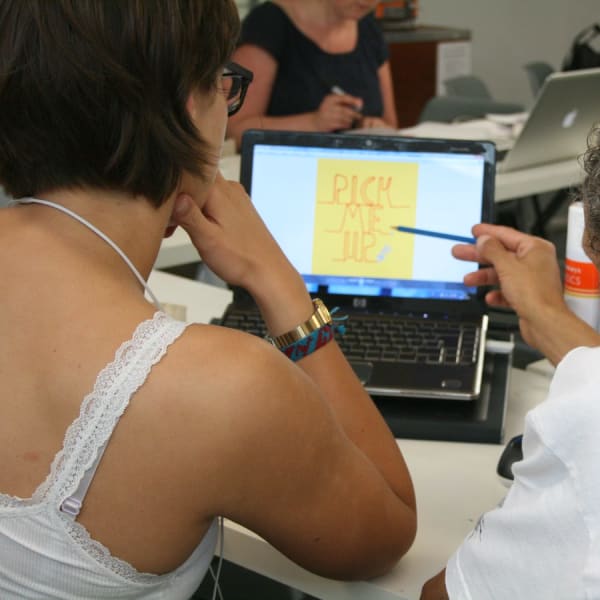
What do employers look for in a graphic design portfolio?

- Written byCarys Thomas
- Published date 10 February 2022

Are you currently developing a graphic design portfolio to apply for work in the industry? You may be wondering what employers want to see in a graphic design portfolio or how you can get your work to stand out in an increasingly competitive environment.
It can be difficult to know what to include when compiling a portfolio, and you may be unsure how to present or market your design work. If you’re just getting started, you may find our guide on how to create a graphic design portfolio a helpful resource.
We’ve compiled this guide to give you an overview of everything employers want to see when evaluating a graphic design portfolio. We’ll include some useful tips on how to curate your best work and show your potential to prospective employers, clients and customers.
Why is a graphic design portfolio important?
Developing a strong portfolio is essential for professional success in the graphic design sector. It is the perfect opportunity to demonstrate your skills or achievements and highlight your ability as a designer.
Employers review portfolios carefully to establish whether a candidate’s skills and experience may be a good match for their professional projects and client base. As graphic designer and UAL short course tutor, Rachel Kirk, notes, "whether you want to get into the industry as a freelancer, agency or staff designer, your portfolio has the power to open doors for you."
As a designer, investing in the development of your portfolio is one of the best things you can do. A carefully curated and well-presented portfolio is sure to get you noticed.
So, what do employers want to see in a graphic design portfolio?
1# Evidence of your specialism or area of interest
Employers will be interested in your specialism or area of interest as a creative professional. Try to include some detail about your background and specialism, whether that’s in branding, marketing, user experience, web design or another area in the broader graphic design field.
It’s important to give employers an insight into the area that you are interested in pursuing and the kind of work you want to produce. This will give your portfolio a clear focus and draw attention to your passion and commitment, which is something that always appeals to employers.
2# A selection of your best work
A strong graphic design portfolio should be carefully-curated. It’s a process that shouldn’t be rushed – remember, first impressions count. Try to be selective and include only your best work. You’ll want to showcase your creative talent in the best possible way, and this means leaving out any work that you weren’t completely happy with. This will also put you in a strong position if you’re asked to talk about a specific project you were involved with during an interview. Don’t be tempted to include everything you’ve worked on in the past as few employers will have the time or inclination to go through a very lengthy portfolio.
Remember your portfolio is something that should evolve as you build up your experience or client base. If you’re just getting started and don’t have much professional experience to highlight, don’t be disheartened – include any relevant personal and experimental projects or voluntary work that demonstrates your potential.
3# A clear and appropriate format
It’s worth spending some time thinking about the best format or medium to present your work. You’ll need to choose a format that reflects your ability as a designer - this will suggest that you are confident and knowledgeable. Consider researching some options and experimenting with different styles and approaches to discover what works best for your needs. A high-quality, professional website that offers an accessible overview of your work is often a good choice.
Be careful with photos – keep in mind that images need be clear and sharp to create impact. Larger images may take too long to load on a website, while very small images may appear pixelated and look unprofessional. Try to find a balance between the two and be sure to view your portfolio on a few different devices with various screen sizes to test the display.
4# Your creative process
You may think that employers are only interested in studying evidence of your final work or the outcome of your professional projects, but it is equally important to discuss your creative process, research and user testing. Including some form of written content or commentary alongside your work will mean that employers will be able to get an idea of how you fulfilled a project brief and the decisions that you made along the way. You may want to include some discussion of any issues you faced in the design process and how you overcame them.
Reflecting on your creative process and decision-making skills will show that you have the ability to adapt your skills to manage complex or challenging projects.
Rachel recommends thinking of your portfolio as a story that you need to tell; "show and tell the 'story' of the creative journey you took through each project or design brief," says Rachel, "include images of research, initial concept sketches, iterations and experimentations with production methods, materials and techniques. Include short explanations to give context and information about your process. Then hand it to someone who doesn't know the project at all and ask them to describe your process back to you. Your portfolio must be able to clearly communicate your creative process and design thinking when you're not in the room to do it yourself."
5# Your creative personality
A design portfolio should reveal something about your creative personality. This is something that will help to set you apart from other applicants and celebrate your unique voice as an artist and designer.
If your portfolio is thoughtfully designed, employers will have a clear sense of who you are, both professionally and personally, after reviewing it. Layout choices, titles and colour palettes can reflect your personal style and identity in a powerful way.
If you’re interested in improving your graphic design skills or expanding your knowledge in this area, take a look at our communication and graphic design short courses.

